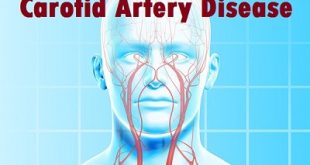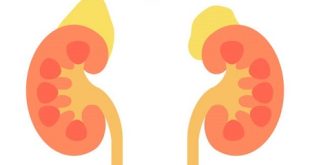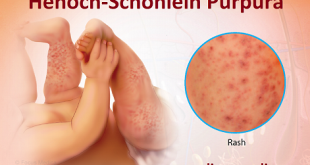What is Chronic Pancreatitis?
Chronic pancreatitis is an inflammation of your pancreas that doesn’t improve over time. The pancreas is an organ located behind your stomach. It makes enzymes, which are special proteins that help digest your food. It also makes hormones that control the level of sugar in your bloodstream.
Pancreatitis occurs when your pancreas becomes inflamed. Pancreatitis is considered acute when the inflammation comes on suddenly and only lasts for a short period of time. It’s considered chronic when it keeps coming back or when the inflammation doesn’t heal for months or years.
Chronic pancreatitis can lead to permanent scarring and damage. Calcium stones and cysts may develop in your pancreas, which can block the duct, or tube, that carries digestive enzymes and juices to your stomach. The blockage may lower the levels of pancreatic enzymes and hormones, which will make it harder for your body to digest food and regulate your blood sugar. This can cause serious health problems, including malnutrition and diabetes.
Pathophysiology
Whatever the etiology of chronic pancreatitis, pancreatic fibrogenesis appears to be a typical response to injury. This involves a complex interplay of growth factors, cytokines, and chemokines, leading to the deposition of extracellular matrix and fibroblast proliferation. In pancreatic injury, the local expression and release of transforming growth factor beta (TGF-beta) stimulates the growth of cells of mesenchymal origin and enhances the synthesis of extracellular matrix proteins, such as collagens, fibronectin, and proteoglycans.
Evidence indicates the involvement of distinct chemokines in the initiation and perpetuation of chronic pancreatitis.
Causes
The pancreas is an organ located behind the stomach. It produces chemicals (called enzymes) needed to digest food. It also produces the hormones insulin and glucagon.
When scarring of the pancreas occurs, the organ is no longer able to make the right amount of these enzymes. As a result, your body may be unable to digest fat and key elements of food.
Damage to the parts of the pancreas that make insulin may lead to diabetes mellitus.
The condition is most often caused by alcohol abuse over many years. Repeated episodes of acute pancreatitis can lead to chronic pancreatitis. Genetics may be a factor in some cases. Sometimes, the cause is not known or caused by gall stones.
Other conditions that have been linked to chronic pancreatitis:
- Problems when the immune system attacks the body
- Blockage of the tubes (ducts) that drain enzymes from the pancreas
- Cystic fibrosis
- High levels of a fat, called triglycerides, in the blood
- Overactive parathyroid gland
- Use of certain medicines (especially sulfonamides, thiazides, and azathioprine)
- Pancreatitis that is passed down in families (hereditary)
Risk Factors
Chronic pancreatitis is more common in men than in women. This often occurs in people ages 30 to 40.Other things that may raise the risk are:
- Alcohol use disorder
- Tobacco use disorder
Symptoms of Chronic Pancreatitis
Most individuals with chronic pancreatitis experience upper abdominal pain, although some have no pain at all. The pain may spread to the back, become worse with eating or drinking, and become constant and disabling. In some cases, the abdominal pain goes away as the condition worsens, but this is fairly uncommon. Other symptoms include the following:
- Nausea
- Vomiting
- Weight loss
- Diarrhea
- Oily or fatty stools
- Clay-colored or pale stools
Individuals with chronic pancreatitis frequently lose weight, even when their appetite and eating habits are normal. The weight loss occurs because the body does not secrete enough pancreatic enzymes to digest food, so nutrients are not absorbed normally, leading to malnutrition.
Patients who have chronic pancreatitis may have a decreased quality of life due to pain and often require admission to the hospital for treatment of symptoms.
Complications
Living with chronic pain can cause mental as well as physical strain. It’s important to speak to your GP if you’re experiencing stress, anxiety or depression caused by chronic pancreatitis.
Diabetes is a common complication of chronic pancreatitis and affects about a third of people with the condition. It occurs when the pancreas is damaged and unable to produce insulin.
People with chronic pancreatitis also have an increased risk of developing pancreatic cancer.
Read more about the possible complications of chronic pancreatitis.
How is chronic pancreatitis diagnosed?
Your healthcare provider will diagnose you with chronic pancreatitis if:
- You have a history of acute pancreatitis that comes back or doesn’t get better
- You have symptoms of chronic pancreatitis
Your healthcare provider will examine your belly. You will also be asked about your drinking history and any family history of pancreatic disease or cystic fibrosis. Blood and imaging tests are an important part of your diagnosis. They can include:
- Blood tests. They will look for high levels of two pancreatic enzymes, amylase and lipase. These may spill into your blood. Other tests may show blockage or damage of your gallbladder. They can also be used to check for certain inherited conditions. You may need vitamin levels and other lab tests.
- CT scan. This test creates a 3-D image of your pancreas, using X-rays and a computer.
- Abdominal ultrasound. This test uses sound waves to create an image of your pancreas.
- Endoscopic ultrasound. This test uses a long, thin tube (endoscope) that is put through your mouth and into your stomach and upper intestine. An ultrasound on the scope makes images of the pancreas and gallbladder ducts.
- ERCP. This test uses a long, thin tube (endoscope) that is put into the pancreas drainage area if treatment needs to be done.
- Magnetic resonance cholangiopancreatography. This test makes images using radio waves, a strong magnet, and a computer. In some MRI tests, you will need to have dye injected to show a more detailed image of your pancreas and the ducts of your gallbladder.
Treatment of Chronic Pancreatitis
The following treatments are commonly recommended for chronic pancreatitis.
Lifestyle changes
People with chronic pancreatitis will need to undergo some lifestyle changes. These will include:
- Stopping alcohol consumption: Giving up drinking will help prevent further damage to the pancreas. It will also contribute significantly towards relieving the pain. Some people may need professional help to quit alcohol.
- Stopping tobacco use: Smoking is not a cause of pancreatitis, but it can accelerate the progression of the disease.
Pain management
Treatment should not only focus on helping ease the pain symptoms, but also depression which is a common consequence of long-term pain.
Doctors will usually use a step-by-step approach, in which mild painkillers are prescribed, gradually becoming stronger until pain becomes manageable.
Insulin
The pancreas may stop producing insulin if the damage is extensive. The individual is likely to have developed diabetes type 1.
Regular insulin treatment will become part of the treatment for the rest of the person’s life. Diabetes type 1 caused by chronic pancreatitis involves injections, not tablets, because most likely the digestive system will not be able to break them down.
Surgery
Severe chronic pain sometimes does not respond to painkilling medications. The ducts in the pancreas may have become blocked, causing an accumulation of digestive juices which puts pressure on them, causing intense pain. Another cause of chronic and intense pain could be inflammation of the head of the pancreas.
Several forms of surgery may be recommended to treat more severe cases.
Endoscopic surgery
A narrow, hollow, flexible tube called an endoscope is inserted into the digestive system, guided by ultrasound. A device with a tiny, deflated balloon at the end is threaded through the endoscope. When it reaches the duct, the balloon is inflated, thus widening the duct. A stent is placed to stop the duct from narrowing back.
Pancreas resection
The head of the pancreas is surgically removed. This not only relieves the pain caused by inflammation irritating the nerve endings, but it also reduces pressure on the ducts. Three main techniques are used for pancreas resection:
- The Beger procedure: This involves resection of the inflamed pancreatic head with careful sparing of the duodenum, the rest of the pancreas is reconnected to the intestines.
- The Frey procedure: This is used when the doctor believes pain is being caused by both inflammation of the head of the pancreas as well as the blocked ducts. The Frey procedure adds a longitudinal duct decompression to the pancreatic head resection – the head of the pancreas is surgically removed, and the ducts are decompressed by connecting them directly to the intestines.
- Pylorus-sparing pancreaticoduodenectomy (PPPD): The gallbladder, ducts, and the head of the pancreas are all surgically removed. This is only done in very severe cases of intense chronic pain where the head of the pancreas is inflamed, and the ducts are also blocked. This is the most effective procedure for reducing pain and conserving pancreas function. However, it has the highest risk of infection and internal bleeding.
Total pancreatectomy
This involves the surgical removal of the whole pancreas. It is very effective in dealing with the pain. However, a person who has had a total pancreatectomy will be dependent on treatment for some of the vital functions of the pancreas, such as the release of insulin.
Autologous pancreatic islet cell transplantation (APICT)
During the total pancreatectomy procedure, a suspension of isolated islet cells is created from the surgically removed pancreas and injected into the portal vein of the liver. The islets cells will function as a free graft in the liver and will produce insulin.
Diet
Taking dietary measures to reduce the effects of pancreatitis are vital.
The pancreas is involved in digestion, but pancreatitis can impair this function. This means that people with the disease will have difficulty digesting many foods.
Rather than three large meals a day, people with pancreatitis will be advised instead to consume six small meals. It is also better to follow a low-fat diet.
Managing the diet during pancreatitis aims to achieve four outcomes:
- reducing the risk of malnutrition and shortages of certain nutrients
- avoiding high or low blood sugar
- managing or preventing diabetes, kidney disease, and other complications
- decreasing the likelihood of an acute flare-up of pancreatitis
A diet plan will either be drawn up by the doctor, or the patient may be referred to a qualified dietitian. The plan is based on the current levels of nutrients in the blood shown in diagnostic testing.
Meal plans will generally involve food sources that are high in protein and have dense nutritional content. These are likely to include whole grains, vegetables, fruits, low-fat dairy products, and lean protein sources, such as boneless chicken and fish.
Fatty, oily, or greasy foods should be avoided, as these can trigger the pancreas to release more enzymes than usual. As a primary cause of chronic pancreatitis, alcohol is also best avoided while on a pancreatitis-friendly diet.
Depending on the extent of the damage, patients may also have to take artificial versions of some enzymes to aid digestion. These will ease bloating, make their feces less greasy and foul-smelling, and help any abdominal cramps.
Prevention of Chronic Pancreatitis
Since most cases of chronic pancreatitis are associated with alcohol use, the best way to prevent the problem is to avoid or limit alcohol use. Anyone who has had an episode of alcohol-related acute pancreatitis should stop drinking entirely to lower the possibility of developing chronic pancreatitis. People who have been diagnosed with chronic pancreatitis can prevent further damage by eliminating alcohol use.
If blocked bile or pancreatic ducts can be opened by surgery or ERCP, it may prevent further damage to the pancreas. If caught early, scarring can be minimized. However, only a minority of people with chronic pancreatitis actually benefit from this procedure.
 Diseases Treatments Dictionary This is complete solution to read all diseases treatments Which covers Prevention, Causes, Symptoms, Medical Terms, Drugs, Prescription, Natural Remedies with cures and Treatments. Most of the common diseases were listed in names, split with categories.
Diseases Treatments Dictionary This is complete solution to read all diseases treatments Which covers Prevention, Causes, Symptoms, Medical Terms, Drugs, Prescription, Natural Remedies with cures and Treatments. Most of the common diseases were listed in names, split with categories.







